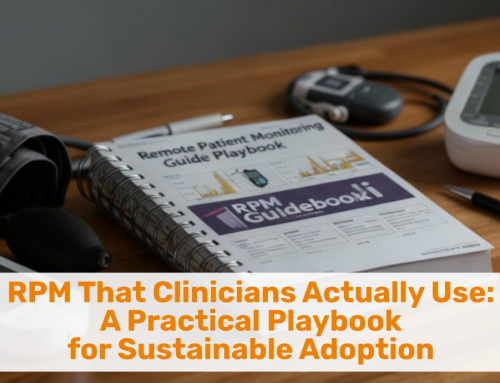Rural communities face some of the steepest barriers to behavioral health care in the country — long travel distances, limited connectivity, low digital literacy, a pronounced clinical provider shortage, and wide-spread stigma around seeking help for mental health. These challenges aren’t new, but they are growing — and they impact everything from access to engagement to outcomes.
That’s why telebehavioral health has become more than just a convenience — it’s a lifeline.
Virtual care offers an opportunity to improve continuity of care, especially when patients can access a consistent provider without leaving their community or missing work. It allows rural programs to reach more patients, retain them over time, and extend the workforce by enabling local clinicians to work across multiple sites.
While national, virtual-only players such as Talkspace, BetterHelp, and Teladoc have a role to play, the most efficacious and most sustainable models in rural areas are local clinicians that are blending telebehavioral health with in-person options and that are integrated with local primary care.
Yet many rural telebehavioral health programs still struggle with scalability, efficiency, and sustained patient engagement. It’s not enough to “turn on” video visits — what matters is how thoughtfully they’re embedded into the clinical and operational fabric.
Here are five interventions that help rural behavioral health centers to move beyond the sporadic phase — and build something that lasts.
1. Promote an Integrated Telehealth Mindset
In most cases, scaling behavioral health requires a mindset shift. If telehealth is merely seen as an emergency backup or and occasional stop-gap measure, it will never reach its full potential.
To scale, telehealth must be normalized as a clinically efficacious mode of care delivery that is used interchangeably with in-person visits based on patient needs and infrastructure realities. Some patients may prefer face-to-face sessions; others benefit from the flexibility of virtual visits. The key is giving providers and patients a consistent, trusted care experience — regardless of the setting.
By integrating telehealth as an option to access care, continuity of care — a critical component in most behavioral health care settings — is enhanced, as no shows and same day cancellations can be avoided.
2. Build Well-Defined, Optimized Telehealth Workflows
With wide-spread provider shortages in rural health every session counts. Clearly defined telehealth workflows reduce waste, delays, frustration and clinician burnout.
Effective telehealth programs don’t just focus on what happens during the video visit — they also clearly define what happens before and after as well:
-
Virtual Intake and eligibility screening
-
Pre-visit prep and patient reminders
-
Documentation, billing, and follow-up
-
Emergency and escalation protocols
When workflows are optimized for a great experience by clinicians and patients, clinicians are less overwhelmed, patients are more likely to stay engaged, and rural behavioral health programs can serve more people with limited resources.
3. Establish a Clear, Organization-Wide Telehealth Policy
Telehealth programs in rural settings often rely on informal norms or homegrown workarounds. But that doesn’t scale and also leaves the organization legally vulnerable if proper policies are not followed.
A clear telehealth policy ensures consistency across providers and visits, even when staff turnover is high or outlying clinics are far away. It sets expectations for, e.g.,
-
Who is eligible for telebehavioral services
-
When to choose virtual vs. in-person
-
Documentation and technology standards
-
Safety and no-show protocols
This clarity is especially helpful in rural settings, where teams are often small, cross-functional, and stretched thin. Policies eliminate guesswork and help everyone operate from the same playbook.



4. Train Clinicians for Success in a Virtual Environment
Rural clinicians are already doing more with less. Don’t assume they’ll pick up virtual care skills on the fly. While it’s not rocket science, there are simple tips in tricks to mastering the “webside manners”.
Telebehavioral success hinges on confident, well-prepared clinicians. Training should go beyond how to use the video platform and should include:
-
Building rapport and managing risk via video
-
Adapting workflows to patients’ bandwidth constraints
-
Applying the telehealth policy and documentation standards
-
Navigating tech glitches with grace and preparedness
In rural areas, clinicians may also serve as informal IT support and workflow trouble shooters. That’s why it’s critical to train them not just to use telehealth, but also to look for ways to make the telehealth experience better for them and the patients.
5. Create an Internal Knowledge Base for Patient Engagement Strategies
Rural patients often face social, cultural, and technological barriers to staying engaged. That makes patient engagement both harder — and even more important.
Successful programs actively create opportunities for clinicians to share with their peers what works (and what doesn’t) to achieve high levels of patient engagement during the visits. Whether that is resources (such as websites) to share virtually, engaging virtual activities (especially for adolescents and children), reminder cadences, follow-up communication, or culturally appropriate engagement strategies. Building this knowledge base helps rural teams:
-
Improve the effectiveness of telebehavioral health across the team
-
Improve team work and increase a sense of belonging
-
Onboard new staff or staff new to telehealth more quickly
-
Minimize unsuccessfully dealing with the same problem over and over again
-
Avoid reinventing the wheel
-
Share solutions rapidly across geographically distributed clinics
With staff shortages and high turnover, especially in rural areas, this internal resource becomes a vital tool for using telehealth as a highly effective clinical tool.
The Rural Reality—and Opportunity
Telebehavioral health is one of the most powerful tools we have to close access and continuity of care gaps in rural communities. But only if it’s done right.
Scaling isn’t about adding more video visit appointment slots. It’s about creating a durable system — one that embraces hybrid care, supports clinicians, engages patients, and delivers continuous, connected behavioral health services close to home.
These five interventions aren’t magic bullets — but in combination they are proven levers for building programs that scale with integrity, especially in rural environments where the needs for behavioral health are high and the resources are few.
📌 Want to assess your rural program’s telebehavioral health scalability? Let’s talk about what’s working — and what’s missing.








To receive articles like these in your Inbox every week, you can subscribe to Christian’s Telehealth Tuesday Newsletter.
Christian Milaster and his team optimize Telehealth Services for health systems and physician practices. Christian is the Founder and President of Ingenium Digital Health Advisors where he and his expert consortium partner with healthcare leaders to enable the delivery of extraordinary care.
Contact Christian by phone or text at 657-464-3648, via email, or video chat.






